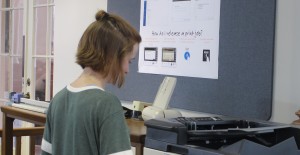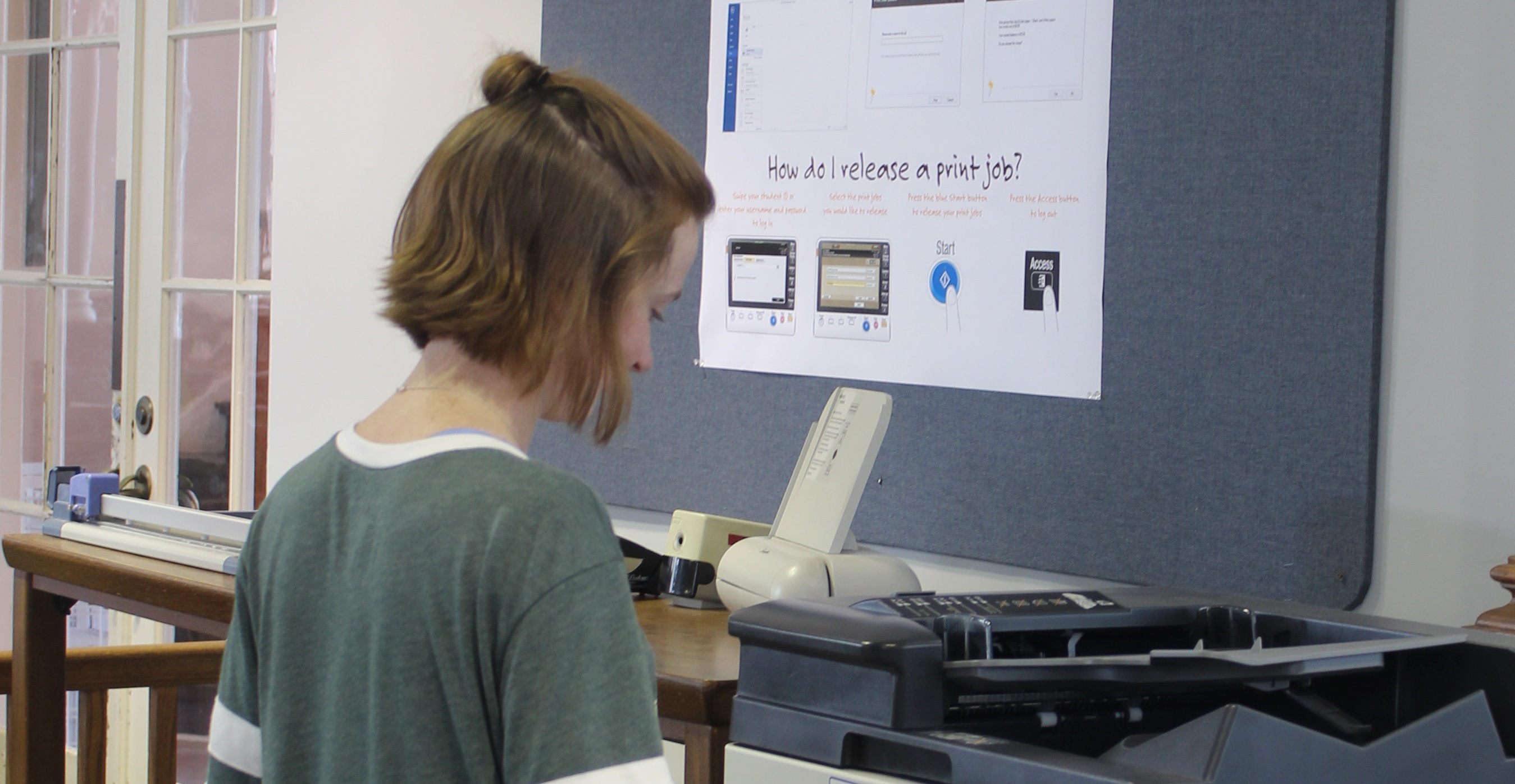Thaw Hall gets new upgrades

The story begins with a number of generous estate gift donations to the school by its alumni. Lynda Becker McMillan, a graduate of Maryville’s class of 1943, received her Bachelor of Science from MC and went on to become a professor working at a series of colleges throughout the state of Tennessee. Over the summer she left a large undisclosed sum to the college.But why the change? Why the new, tall printers with the blue, blinking button and card swipe? Why empty corners and the open layout?
In memory of his wife Claudia McLaughlin, Rev. Kenneth J Wilkinson, an alumnus from the class of 55’ also endowed the school with $10,000 to use as it saw fit. The remainder of the contributing sum came from money found left over in the Academic Affairs annual budget. All of these funds, coming as a great surprise to staff, became available to the library around June 2.
In a scramble to make meaningful renovations to one the college’s main work environments, library staff began to brainstorm. They began to question what needs were most pressing for the student body. The most immediate answer was new seating.
“We felt what students most need is flexibility,” said Quick. “What we wanted was to provide the students with comfortable seating that could easily be rearranged and reconfigured to accommodate large study groups.”
The new seating with the tablet arms provides versatility, making it a comfortable place for recreational reading as well as to hurriedly type up a summary due in the next hour.
“We are looking to take our resources and make them modern in terms of tools and approach,” said Quick.
She noted that the changes in decorum have helped to “reinvigorate us as a library staff and has refreshed our perspective.”
Another improvement is the introduction of new outlets. Some furniture has been moved to reveal five preexisting wall outlets and four floor outlets. An effort will be made to mark all of the available outlets with signs. As for the new outlets, Quick and staff have been entertaining the idea of purchasing dividing walls with rows of outlets built in, providing students both power and privacy.
Perhaps the change that as caused the most stir on campus is the new printing system. The interface, although less conventional, is extremely efficient and provides students services which were previously not available. The service provides the option to print in color, the ability to send a fax message, the ability to print remotely, and the ability to scan and create pdf files.
Quick says the library staff prefers the new printing system to the old which frequently required “duct tape and chewing gum” patches.
Quick said it reminded her of her 1989 Dodge Colt, “It just required too much time and effort knowing it was going to fail in the end.”
An efficiency report showed as much as 30% of the time employees spent working, was encompassed in the task of babysitting printers with paper jams. The new printers and printing system has seen none of these problems.
When John Berry, director of information technology, joined school staff in April of last year, he came with a new vision: a more efficient model for student technologies. According to a MISO survey done last year, around 95% of students have a computing device of their own; this meant that library computers were occupied for printing rather than the need for a computer.
Some software for classes could only be found on the library desktop computers. If students had a document written on a personal computer, you would have to transfer it to a thumb drive or email to yourself. Berry has sought to remove this unnecessary step in production. To remedy this, IT launched the Maryville College Print Center website, print.maryvillecollege.edu, which allows students to send documents to printers from personal devices.
With the printing system upgrade, came a new printing policy. The policy allots a $25 credit to all students, which will cover printing for approximately 500 pieces of black and white paper per semester. An additional $25 is allotted to students completing their senior thesis.
The change came in an effort to approach campus printing in a sustainable way. Last year, the MC population of about 1,200 students printed over 1,000,000 pieces of paper, and the figure has steadily climbed over the years. The sum was not only substantial in terms of in its financial impact, but in its environmental unsustainability.
Limits aside, Maryville still offers more paper at a cheaper price than most other schools around. Berry recounts the reactions of a freshman, transfer and senior all sitting in his office after the printer policy change.
“The freshman having no point of reference said, ‘Thanks,’” said Berry. “The transfer said, ‘That’s Great News! My last school only gave me 5 dollars!’ The Maryville senior thought the world was ending.”
One of the perks of the new software is that every time a transaction is made via the printer, granular data is collected. This data includes elements such as date, time of day, class paper load, and more generally, an expected paper load for a major.
Information Technology is trying to find the school’s “happy medium” of paper consumption and possibly cater the value of paper given to specific majors. The goal of this, however, is to make students more mindful of their paper consumption and to raise sustainability awareness.
These developments have gotten the ball rolling on future projects for the library. In the future, the library staff is considering renovating the Thaw Hall basement, adding a standing laptop bar and replacing the flickering halogen lighting.
The staff is always open to further suggestions, and a suggestion box is located on the Maryville Library Webpage. If you would like to see any other renovations to the library workspace, whether from the article or original ideas, please leave them there to be reviewed.

